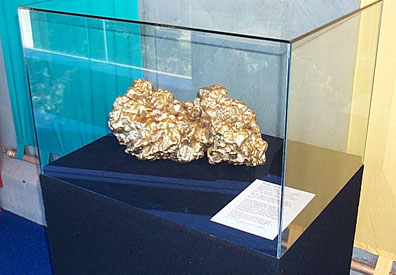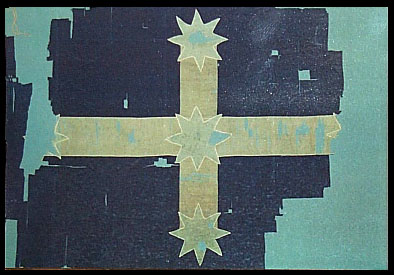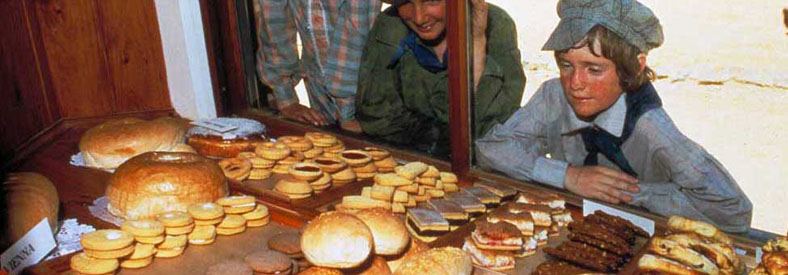The interpretive centre is near the site of the historic Eureka Rebellion of December 1854 when miners took arms against
an oppressive and unjust administration on these goldfields.
It was Australia's only armed civil rebellion and the birthplace of the Eureka Flag, which is now housed in the
Ballaarat Fine Art Gallery.
The centre comprises a series of galleries using state-of-the-art, multi-media technology to graphically recreate the
atmosphere and events which led to the battle, and the actual storming of the stockade itself.
A theatrette provides a background to the events and there is an exhibition which includes a fragment of the flag.
The 'Under Eureka' display has items discovered in a mineshaft under the site during construction of the building, and
there is much more of interest relating to the goldfields, the rebelleion and life of the times.
The centre is open from 9am to 5pm. daily except Christmas Day.
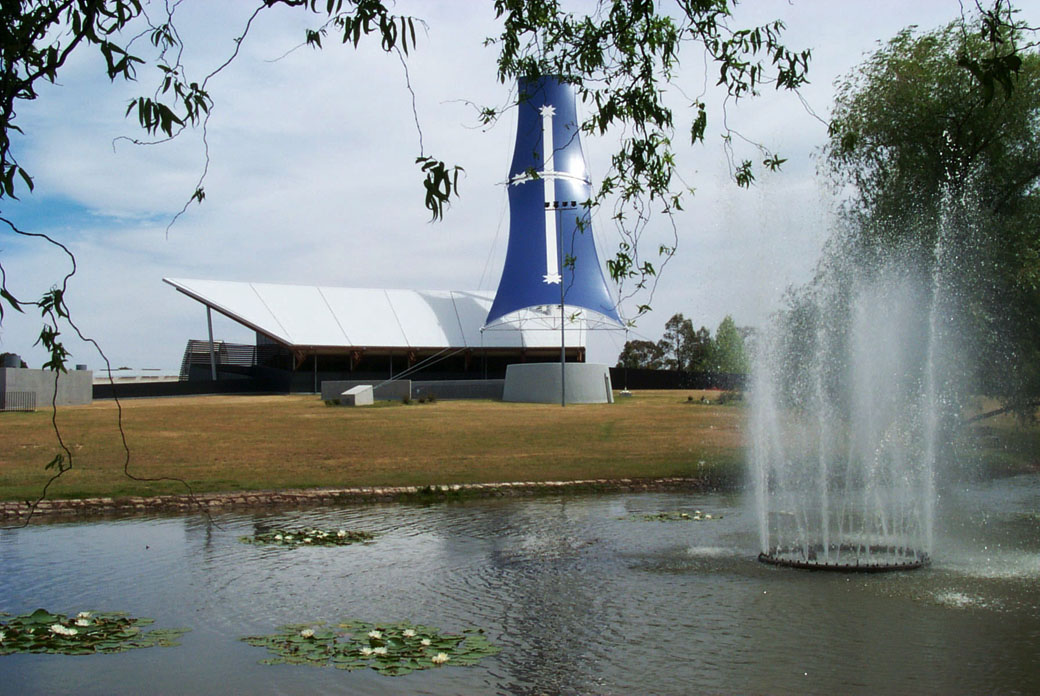
The Eureka Exhibition in Eureka St.
|
The incident known as the 'Eureka Rebellion', and the stockade where
some 150 poorly equipped and ill-trained miners stood their ground against representatives of a
corrupt and greedy system, is now a major part of Australia's history.
In 1854, following the arrest of three diggers for the burning down of Bentley's Hotel, a group of
around 1,500 disenchanted Ballarat miners congregated on Eureka Hill behind a rapidly put together circle of logs and prepared
to defend their rights and challenge the the abuse of their liberties against an oppressive authoritarian government.
They were protesting against Mining License fees, the police habit
of 'digger-hunting", corruption among goldfields officials, and the brutality and cursory attitude of troopers of the
fledgling colony enforcing the laws.
Among them was the leader and main instigator, Peter Lalor (1827-1889) (pronounced lawlor), and Raffaella Carboni, an Italian miner.
Their dawn stand against troopers, police and cavalry resulted in the deaths of 22 miners and 6 soldiers, and the taking of 114 prisoners,
on the 3rd. Dec. 1854. A one sided battle it lasted only some 20 minutes. Lawler was wounded in the battle and escaped to the home of
Father Smyth where his left arm was amputated before he was moved to Geelong and cared for by Alicia Dunne, his future wife.
Thirteen diggers were charged with treason and a reward was offered for the capture of Lawlor. A Commission was establoshed to investigate
the incident and conditions on the goldfields which resulted in the reward being revoked, and in April all charges against the miners were dropped\
The Commissioners recommended that the Legislative Council be enlarged to include goldfields representation and Lalor was elected unopposed
to represent the area in November 1855. He held the seat of North Grenville until 1859 when he won the seat of South Grant.
In 1875 he became Commissioner for Customs in the Berry government, and in 1880 he became Speaker.
Following the death of his wife and daughter, and in ill health, Lalor retired from politics in 1887 and went to San Francisco to visit
his son, Joseph, and died there in 1889.
Details of this historic event will be found at many places around Ballarat.
The Eureka Stockade Centre in the park at the site in Eureka Street details the events
and the battle in an interactive display and there is now a reconstruction of the actual log stockade, although there has
been some controversy over its exact location.
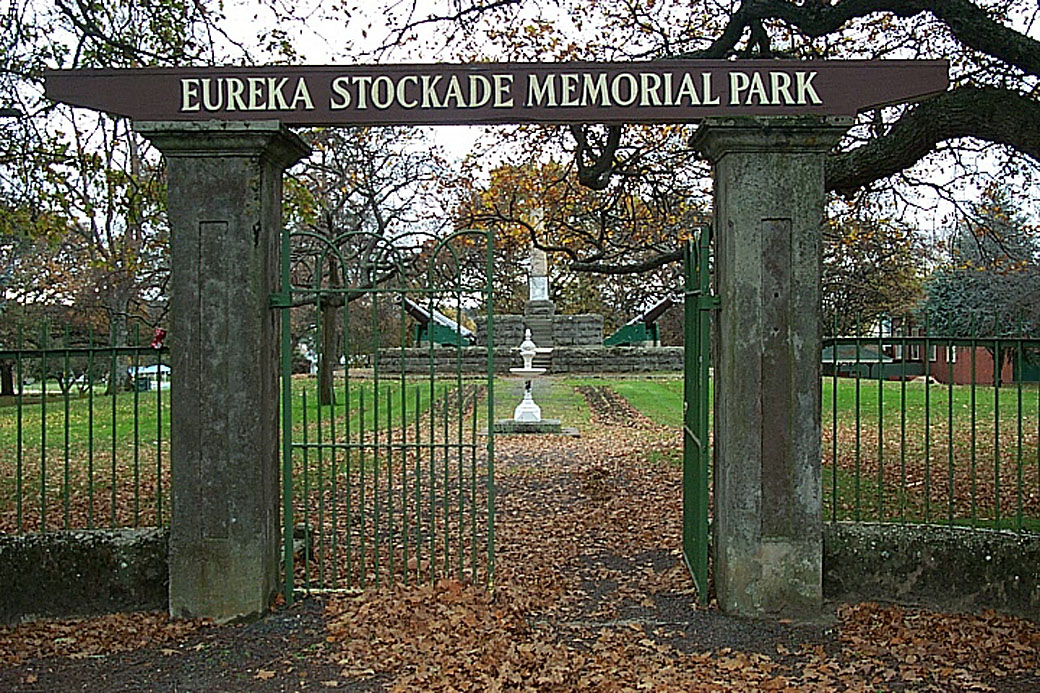
Entry to the Eureka Memorial Park in Eureka St.
The Eureka Memorial and Park, near where the events occured, features a coin-in-slot diorama and dialogue about the
uprising. The miners fought under their own, new flag, a representation of the Southern Cross now adapted as a symbol of Freedom by
interest groups at protests and of the Union movement in Australia. It is a horizontal white cross on a blue background with a central
star and stars at the four points of the cross. The remains of the battle-scarred flag are usually in
the Ballaarat Fine Art Gallery in Lydiard Street displayed in its own gallery, but may be on loan to other galleries
from time to time Check first Ph: 03 5320 5858 artgalleryofballarat.com.au
At the old cemetery on Creswick Rd, a monument erected in 1856 remembers the fallen miners, and nearby, another in honour of
the soldiers who lost their lives.
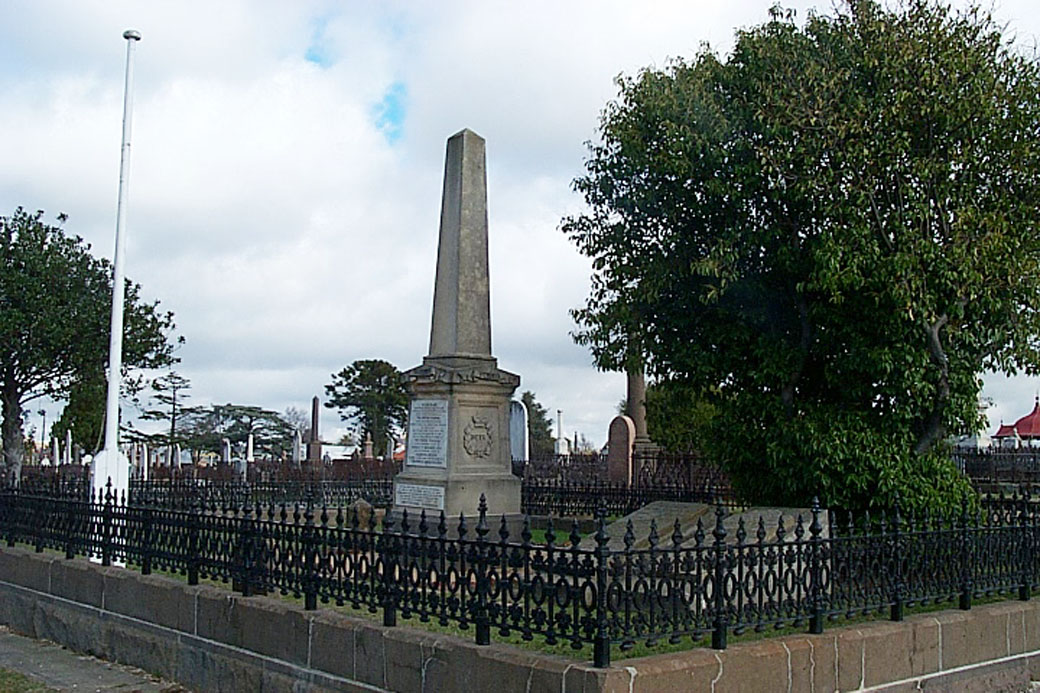
Memorial to Police killed in the battle..
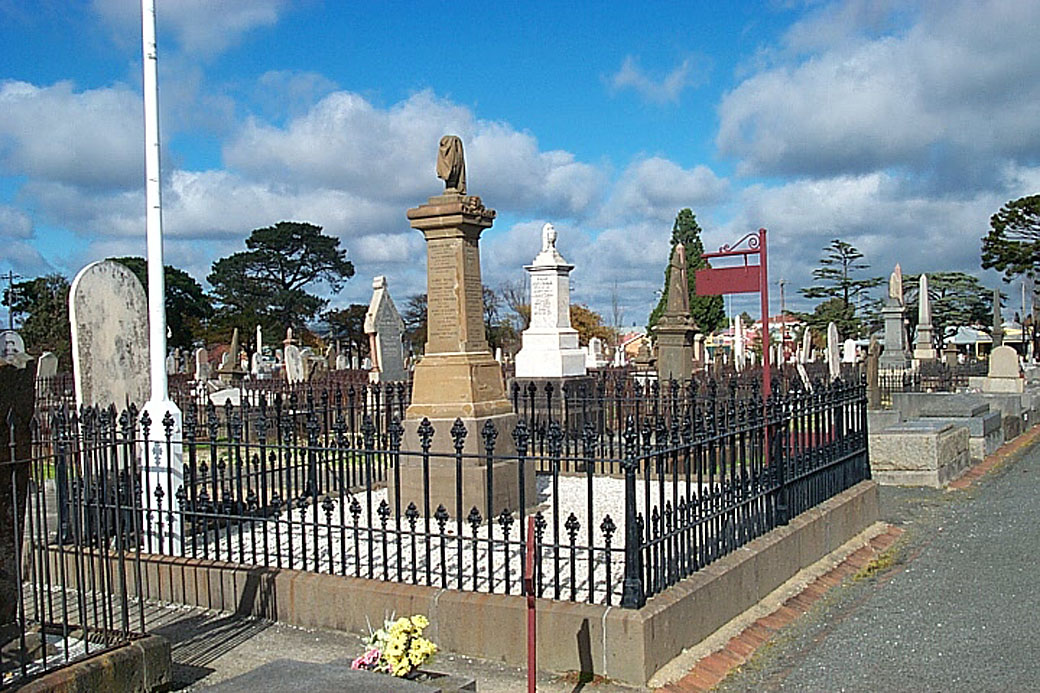
The Diggers Grave Memorial in the Old Ballarat Cemetery.
The Sovereign Hill Historic Park operates a laser-light show
of an evening 'Blood on the Southern Cross', which takes the audience through
a realistic re-enactment of the whole series of events which have become known
as the 'Eureka Rebellion', Australia's only organised rebellion against authority
in its 230+ year history.
An excellent brochure 'Eureka Ballarat' explains the events leading
up to the rebellion in detail and is available free from tourism operators and
most of the accommodation houses in Ballarat. Maps in this guide will pin-point
the major places of interest to visit, including the actual stockade, about
300 metres along Eureka St. towards the city, from Eureka Park.
by Pete Wilkins. 2020
|

